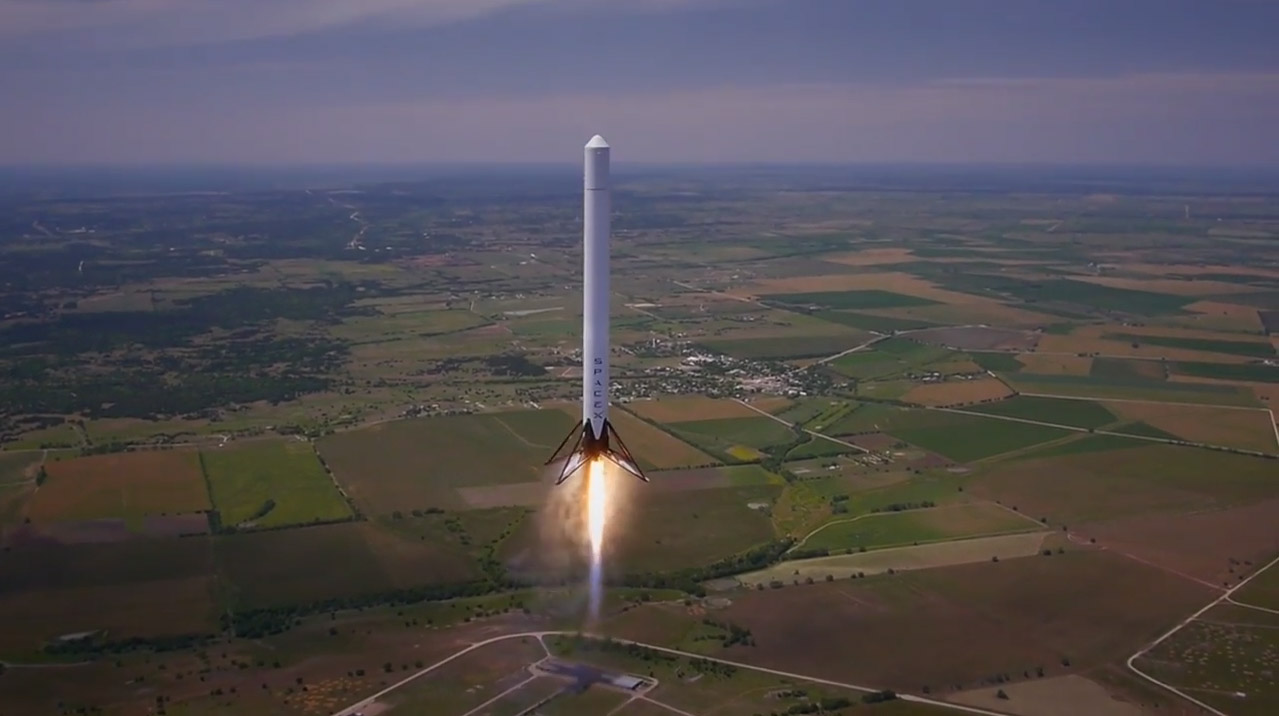Public-Private Partnerships Key to US Spaceflight Future, Experts Say

The future of United States space travel will involve significant governmental cooperation with private industry, according to a panel of spaceflight experts.
Government contracts with aerospace firms have changed the face of spaceflight in the United States. NASA officials hope to start using privately built spaceships to ferry astronauts to and from the International Space Station by 2017, and two companies (SpaceX and Orbital Sciences Corp.) already fly robotic vessels full of supplies to the orbiting outpost.
"This is no longer your grandfather's space program," Darrell West, vice president and director of governance studies at the Brookings Institution, said during a panel he moderated today (May 14). "Increasingly, we are seeing commercial firms launch satellites, supply the International Space Station or even offer the prospect of space tourism in the near future." [The Rockets and Spaceships of SpaceX (Photo Gallery)]
Private and public space
SpaceX engineers have been working for years to develop a fully and rapidly reusable rocket stage. The spaceflight firm recently soft-landed the first stage of its Falcon 9 rocket in the ocean after launching it to space. But Antonio Elias, the executive vice president and chief technical officer at Orbital Sciences, thinks that developing reusable rockets might not be the best use of resources without plenty of launches to support it.
"If the absolute elasticity of demand for launch and price is sufficiently high and if SpaceX is able to go to 50 or 60 flights a year, their efforts in reusability will pay off handsomely," Elias said during the Brookings Institute panel discussion. "But if it falls short of 50 to 60 a year, it's going to be wasted money."
3D printing also holds a lot of potential for future spaceflight ventures, according to Adam Harris, vice president of government sales at SpaceX. Recently, SpaceX tested a 3D-printed metal rocket nozzle at the firm's test stand in Texas.
Breaking space news, the latest updates on rocket launches, skywatching events and more!
"3D printing is a major advancement that SpaceX is trying to use to lower the cost of building, lower the cost of research and development," Harris said. "This is an advanced way of doing 3D printing. It's with metal and it's with better metals. A lot of the 3D printing technology relies on plastics and other ways of doing it."
Future science
On the scientific side of the coin, Mars should be an exploration goal for scientists in the future, said Michael Meyer, lead scientist for NASA's Mars exploration program. NASA's Mars rover Curiosity has confirmed that the Red Planet could have been habitable in the distant past, and further study is needed to understand whether life did exist on Mars.
"One of the things that we'll look at in the future is not only deciding whether or not life ever got started there, but in all honesty, I think it's the only place in our solar system that has any real possibility of colonization," Meyer said during a second Brookings panel today (May 14). "So, in the long term, I think going to Mars will be a theme whether or not we're doing it robotically or whether or not we're doing it with humans."
Other bodies in the solar system are also worth investigating, experts said.
"As far as I'm concerned, 2015 is the year of the dwarf planets because we have two missions out there," said Nadine Barlow, a professor of physics and astronomy at Northern Arizona University. "One [NASA's Dawn mission] is on its way to Ceres, which is the largest asteroid in the asteroid belt, but is also known as a dwarf planet."
The second big mission is NASA's New Horizons mission scheduled to arrive in the Pluto system next year, she added.
Jupiter's icy moon Europa has a liquid water ocean underneath its ice shell that might be able to host life. NASA is currently looking into a Europa mission that could help scientists understand whether the moon could harbor life.
"Depending upon what we find on Mars, what we find on Europa, what we find on [Saturn's moon] Enceladus, it may give us very good clues about what was going on in the early solar system and where the places are that life could have begun," Meyer said.
You can listen to the full two hour discussion via Brookings: http://www.brookings.edu/events/2014/05/14-future-us-space-program
Follow Miriam Kramer @mirikramer and Google+. Follow us @Spacedotcom, Facebookand Google+. Original article on Space.com.

Miriam Kramer joined Space.com as a Staff Writer in December 2012. Since then, she has floated in weightlessness on a zero-gravity flight, felt the pull of 4-Gs in a trainer aircraft and watched rockets soar into space from Florida and Virginia. She also served as Space.com's lead space entertainment reporter, and enjoys all aspects of space news, astronomy and commercial spaceflight. Miriam has also presented space stories during live interviews with Fox News and other TV and radio outlets. She originally hails from Knoxville, Tennessee where she and her family would take trips to dark spots on the outskirts of town to watch meteor showers every year. She loves to travel and one day hopes to see the northern lights in person. Miriam is currently a space reporter with Axios, writing the Axios Space newsletter. You can follow Miriam on Twitter.
